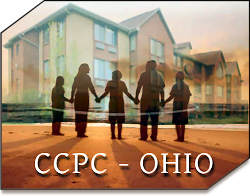Property Division in Ohio Can Be Complicated In Marriage Breakup – Hire A Experienced Divorce Lawyer Early
 Depending upon the issues in a marriage breakup, dividing assets and debts is usually a preliminary topic of conversation. This can be a complex and lengthy discussion depending upon the nature of the assets, length of the marriage, and title of the property. The first aspect of analyzing how the court may divide property pertains to whether or not the property was acquired before or after the date of marriage. If the property is separate pre-marital property, that property would remain the property of the initial owner and would not be subject to division. In Ohio, property acquired during the term of the marriage is generally divided “equitably”. While the courts in Ohio strive to create a fair property division, this may not always lead to a 50/50 equal distribution. But, an equal division is presumed to be the starting point. The Court hopes to end up with a decision, that when viewed as a whole, leaves both parties with roughly equal shares of the marital estate.
Depending upon the issues in a marriage breakup, dividing assets and debts is usually a preliminary topic of conversation. This can be a complex and lengthy discussion depending upon the nature of the assets, length of the marriage, and title of the property. The first aspect of analyzing how the court may divide property pertains to whether or not the property was acquired before or after the date of marriage. If the property is separate pre-marital property, that property would remain the property of the initial owner and would not be subject to division. In Ohio, property acquired during the term of the marriage is generally divided “equitably”. While the courts in Ohio strive to create a fair property division, this may not always lead to a 50/50 equal distribution. But, an equal division is presumed to be the starting point. The Court hopes to end up with a decision, that when viewed as a whole, leaves both parties with roughly equal shares of the marital estate.
If a spouse inherits property (or is gifted specific property during the course … Read More... “Divorce: Dividing Property, Assets & Debts in Ohio”


 In Ohio, and elsewhere, you may be able to deduct the interest paid on the mortgage on your principle residence when filing your tax return. A deduction is simply the lowering of your taxable income. For example, if you make an adjusted gross income of 70,000 dollars and have paid 10,000 dollars in mortgage interest throughout the year, you’re taxable income before other deductions would be 60,000 dollars.
In Ohio, and elsewhere, you may be able to deduct the interest paid on the mortgage on your principle residence when filing your tax return. A deduction is simply the lowering of your taxable income. For example, if you make an adjusted gross income of 70,000 dollars and have paid 10,000 dollars in mortgage interest throughout the year, you’re taxable income before other deductions would be 60,000 dollars. When I am retained by a client (Husband or Wife) who is seeking a divorce from his or her spouse, one of my initial questions is: Do you know
When I am retained by a client (Husband or Wife) who is seeking a divorce from his or her spouse, one of my initial questions is: Do you know  On March 24th, 2014, I traveled from Dayton, Ohio to Mason, Ohio to interview Brenda Patton, Therapist, Parenting Coordinator, and Mediator for The Counseling and Cooperative Parenting Center of Ohio, LLC, also known as “CCPC – Ohio”. Initially, I was interested in interviewing a spokesperson of this Parenting Center as they were a “private” entity providing supervised visitation or supervised parenting time for families in Montgomery, Warren, and Hamilton Counties. When I learned that the service of supervised visitation had been discontinued in July 2013, I explored other topics of interest. When Ms. Patton advised me that the Center was interested in working with “high conflict” divorce matters, my interest was piqued.
On March 24th, 2014, I traveled from Dayton, Ohio to Mason, Ohio to interview Brenda Patton, Therapist, Parenting Coordinator, and Mediator for The Counseling and Cooperative Parenting Center of Ohio, LLC, also known as “CCPC – Ohio”. Initially, I was interested in interviewing a spokesperson of this Parenting Center as they were a “private” entity providing supervised visitation or supervised parenting time for families in Montgomery, Warren, and Hamilton Counties. When I learned that the service of supervised visitation had been discontinued in July 2013, I explored other topics of interest. When Ms. Patton advised me that the Center was interested in working with “high conflict” divorce matters, my interest was piqued. Interestingly, while the total number of new cases filed in Ohio in 2012 hit a 10-year low, the same cannot be said about divorce actions. Ohio has seen a recent spike in divorce after a steady decline for the past decade. To get a better grasp on why this is occurring, we must first look at the statistics of divorce in the Greater Dayton Area and Ohio in general.
Interestingly, while the total number of new cases filed in Ohio in 2012 hit a 10-year low, the same cannot be said about divorce actions. Ohio has seen a recent spike in divorce after a steady decline for the past decade. To get a better grasp on why this is occurring, we must first look at the statistics of divorce in the Greater Dayton Area and Ohio in general. When married couples decide on a divorce, a number of things can happen. When one party decides to file for the divorce, they can either attempt the divorce pro se (without a lawyer) or hire an attorney. There is another option.
When married couples decide on a divorce, a number of things can happen. When one party decides to file for the divorce, they can either attempt the divorce pro se (without a lawyer) or hire an attorney. There is another option. Frequently, people who are unhappy in their marriages wait until after the holiday season to move ahead with the dissolution of their marriage. If you are one of those folks who have made this decision, you know it is not easy to make that first move. Sometimes people struggle for years in unhappy relationships before they decide it is time to end the marriage.
Frequently, people who are unhappy in their marriages wait until after the holiday season to move ahead with the dissolution of their marriage. If you are one of those folks who have made this decision, you know it is not easy to make that first move. Sometimes people struggle for years in unhappy relationships before they decide it is time to end the marriage.